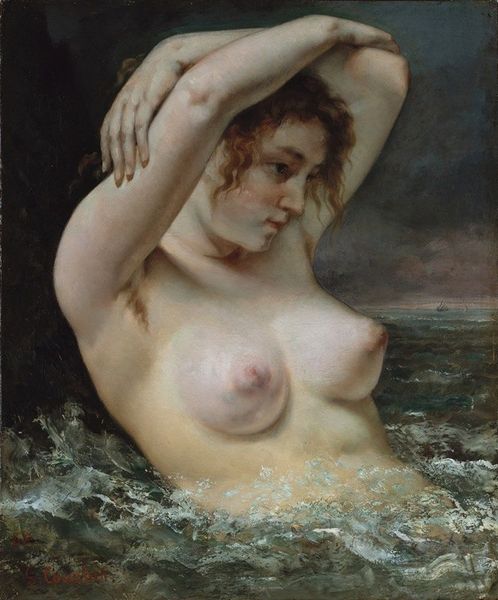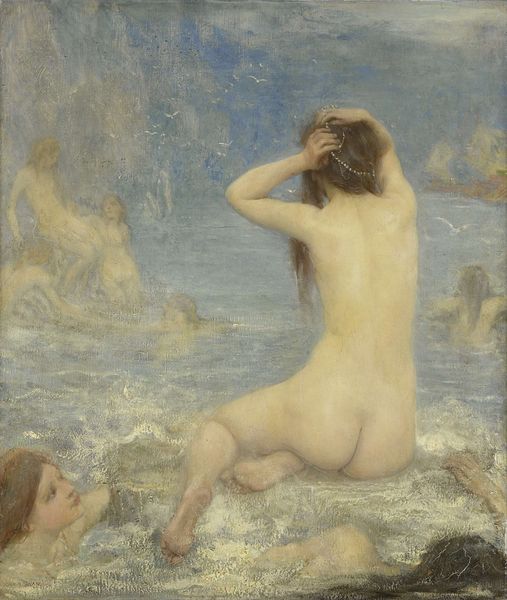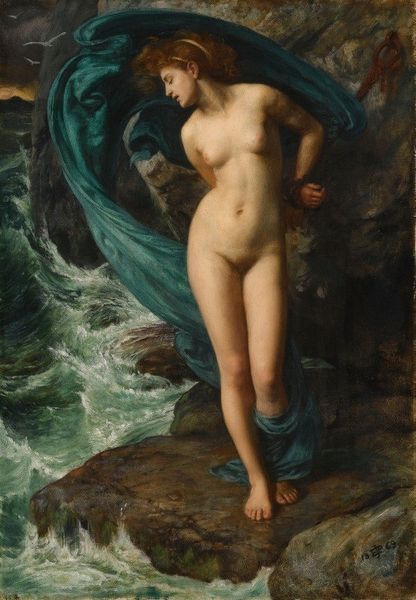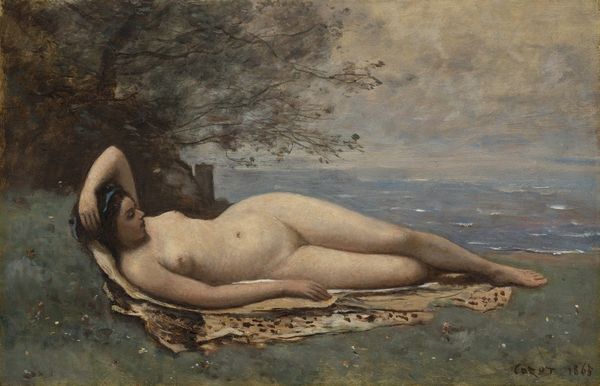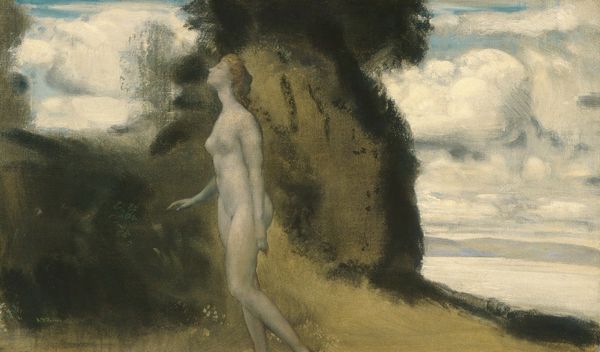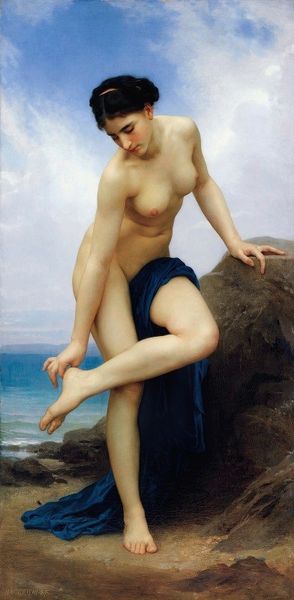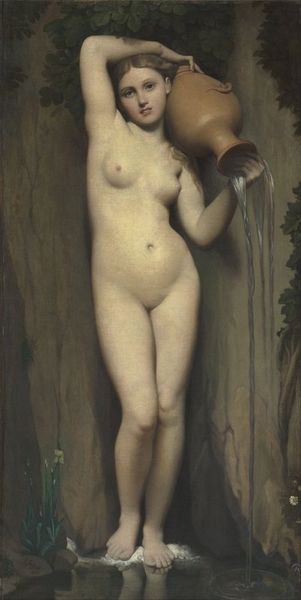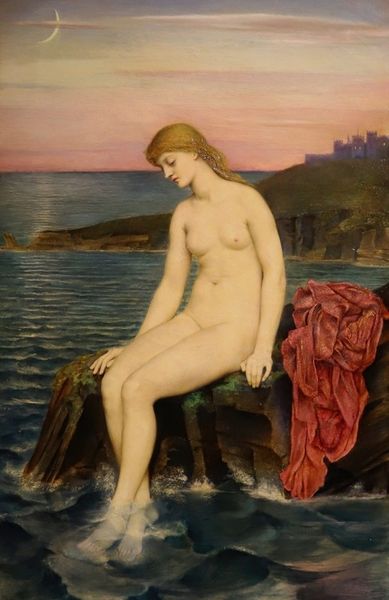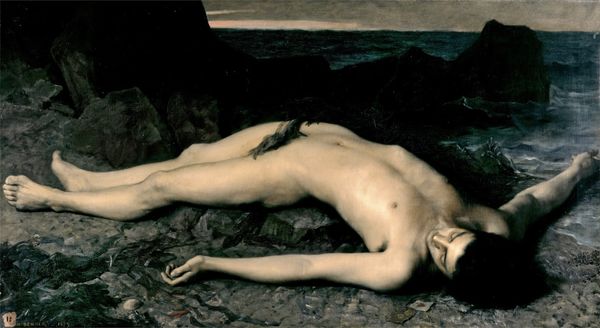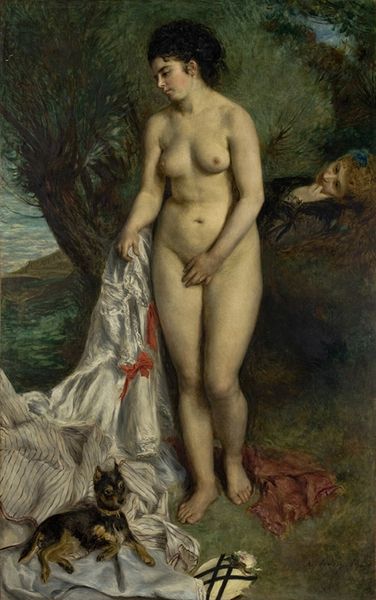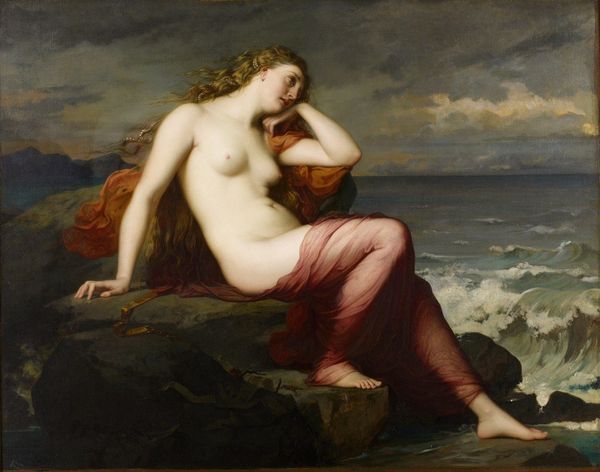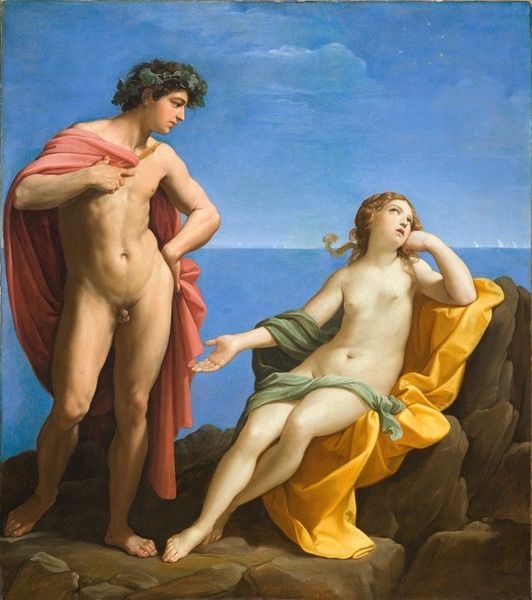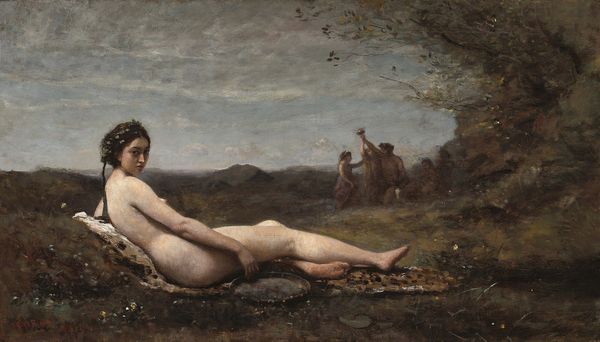
painting, oil-paint
#
portrait
#
neoclacissism
#
narrative-art
#
painting
#
oil-paint
#
figuration
#
oil painting
#
mythology
#
history-painting
#
academic-art
#
nude
#
portrait art
Copyright: Public Domain: Artvee
This oil on canvas painting, "Perseus and Andromeda," was created by Jean Auguste Dominique Ingres in the 19th century. Ingres uses thin layers of oil paint, almost like glazing, to create a smooth, porcelain-like surface, especially noticeable in the figures' skin. This technique, favored by academic painters, demanded careful preparation and skilled execution. The subdued palette, dominated by blues and browns, further enhances the painting's classical feel. While Ingres aimed for timeless beauty, the very choice of oil paint on canvas was tied to larger economic systems. Pigments were sourced globally, and the canvas itself was a manufactured product. The smooth finish, achieved through laborious layering and blending, speaks to a culture that valued refinement and control. Ultimately, understanding the materiality and making of "Perseus and Andromeda" allows us to see beyond the surface and appreciate the complex interplay between artistic intention, material properties, and social context.
